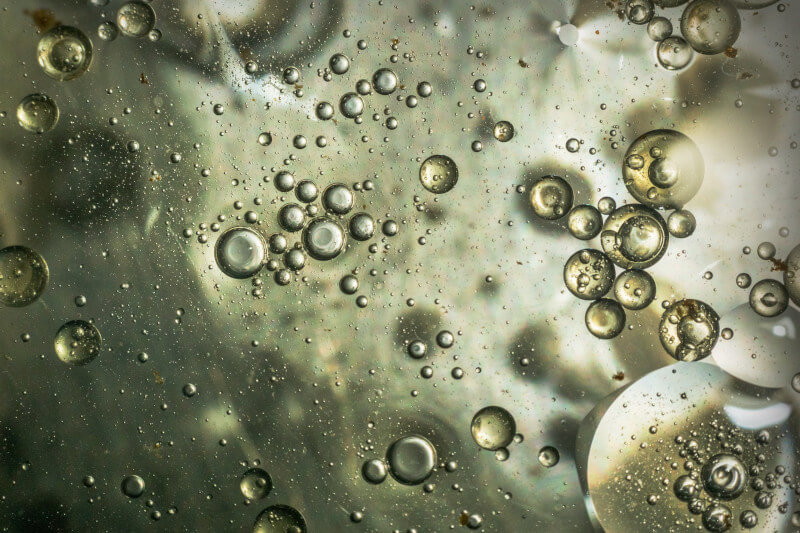The concepts of cooling and conditioning systems date back a significant amount of time. More than a hundred years have passed since the invention of the modern air conditioning unit, and in that time there have been countless developments and enhancements made to new models. Heating, ventilation, and conditioning systems are an integral part of our day-to-day lives. This is true whether we are at home, at work, or in public places like grocery stores, eateries, and healthcare facilities. However, there is a possibility that there are some interesting tidbits that you are unaware of. To pique your interest for more information, here are interesting facts about air conditioning units:
The First Attempts at Artificial Cooling Were Made Using Chemical Reactions

In the early days of science, before the advent of mechanical engineering, researchers focused on chemical reactions that induced cooling. Benjamin Franklin and the chemist John Hadley discovered in the 18th century that the process of liquid evaporation resulted in a drop in temperature that could reach below the freezing temperature.
They used a thermometer containing mercury to test a variety of liquids and found that evaporating water lowered the temperature of the remaining liquid. They also discovered that the degree of cooling produced by various liquids changes based on the fluctuation of the liquids and, consequently, the speed with which the liquids vanish. Alcohol was significantly more effective than water in bringing the temperature down, and the highly unstable ether had an even more potent ability for doing so. Their tests, however, were carried out on relatively insignificant quantities of liquid and had no discernible impact on the ambient temperature. Nevertheless, they were instrumental in the development of synthetic cooling.
Michael Faraday made additional headway on such early inventions later on in the 19th century. He began conducting experiments with ammonia and discovered that it could reduce the temperature of the air in his science lab. He did this by first compacting and melting the ammonia and then enabling the liquid to evaporate. Even though it is poisonous and therefore has no use in modern society, the revelation of ammonia was a significant step forward in the development of cold storage as it is practiced today.
The Development of Contemporary Air Conditioning Units Was Motivated by the Need to Dry Ink
Remarkably, the first modern-day example of an air conditioning unit wasn’t created with the intent of cooling and human convenience; rather, it was created to control moisture at a publishing house. Willis Carrier, an engineer, was given the task of addressing a humidity issue that existed in a building that belonged to a publishing house at the turn of the 20th century. The high levels of moisture deterred the ink from completely drying, which caused it to smudge. Additionally, it prompted the pages of the magazine to wrinkle and change shape.
To fulfill the request, he was successful in creating a method to regulate the amount of moisture in the air. Subsequently, after recognizing the prospects of his system, he continued working on his creation to refine it and bring it to market under the name “apparatus for treating air.” The reality that this system not only lowered the temperature inside but also maintained a consistent degree of humidity is what makes it the most comparable to contemporary air conditioning units. Because of this, he is known as the “Father” of the air conditioning unit, which is a title that is well deserved.
AC Has Been of Immense Help to Contemporary Medical Practice

In an era before the invention of air conditioning, conducting clinical research was a task that was substantially more difficult. Extremely volatile temperatures presented several difficulties for diagnostics and chemical laboratories. The availability of temperature control devices made it possible to keep temperature changes and moisture levels at constant levels, which simplified the process of researching and developing medicines to treat a variety of conditions and diseases.
Researchers can work in a secure setting thanks to the use of particle filters and airflow, even though they are handling chemicals that may have negative impacts in an environment with inadequate ventilation. You may be already aware of this fact because instructions for storing home medications indicate that they should be kept out of sunlight and heat. However, maintaining certain chemical compounds and keeping their useful properties requires cool temperatures.
The Presence of AC Makes It Possible for Individuals to Live in Previously Inhospitable Regions
What are some similarities that can be found between Dubai and Las Vegas? Deserts encircle both of these cities, which both have thriving economies despite being in the middle of nowhere. Both have experienced exponential growth over the past few decades amidst the innately adverse weather conditions in which they are located. The fact that these cities’ population numbers were able to prosper and grow thanks in large part to the assistance of air conditioning is one of the factors that stands out regarding these cities. Cooling systems are regarded as an essential component of city life in these cities.
The regulation of the climate has been extremely important in the process of making the living conditions for both tourists and residents as desirable as possible. In Dubai, where summertime temperatures typically range between 35 and 40 degrees Celsius, the cost of cooling accounts for more than 70 percent of a household’s total energy bill. In addition, the city of Las Vegas requires that HVAC systems be fitted in at least 90 percent of all newly constructed homes. Without contemporary air conditioning, it would be impossible to create pleasant living conditions in dry areas; fortunately, the efficiency of these systems is improving all the time. The situation is the same in a great number of other hot climates, such as Florida and Texas, as well as Hong Kong and Singapore, as was previously mentioned.
The Warm Weather and the Time Off During the Summer
We mentioned that air conditioning was the driving force behind summer blockbusters, but even before air conditioning, heat was a factor in determining vacations. The vast majority of educational institutions around the world have extended summer breaks, which were initially devised as a respite from the uncomfortable conditions of learning and remaining inside classrooms brought on by high temperatures. Before the invention of climate control, rich families could use this time of year to travel to their vacation homes by the water or near bodies of water to get away from the oppressive heat.
The temperature rise would cause a slowdown in production across all sectors of the economy, turning summer into a traditionally slow period for commerce. Even though most businesses have been able to keep their levels of productivity constant throughout the year ever since widespread access to air conditioning became commercially available, summer holidays in schools remain the norm. It is commonly believed that children gain the most from extended periods of rest. This is because their developing brains require time off to both consolidate what they have learned throughout the school year and prevent burnout. To our great relief, this is one beneficial fact that has remained the same despite the proliferation of air conditioners.
Before the Invention of Air Conditioners, Architecture Looked Very Different
When you think about ancient civilizations like the ones in Ancient Egypt, Rome, and Greece, you might find yourself wondering how people survived the hot weather during that period. Back then, everyone was very interested in architecture, specifically how residences could be constructed to reduce the negative effects of sunlight and maximize the benefits of air circulation. The earliest examples of architecture feature narrow windows, high ceilings, and hallways to facilitate the movement of cool air throughout the spaces.
“Wind catchers” were large structures that were placed at the very top of ancient Persian buildings. These wind catchers caught the breeze and channeled it into the interior rooms. To beat the heat, many people took advantage of the indoor fountains and pools that were available. Big windows to allow natural daylight and reduced ceilings to optimize space utilization in multi-story buildings are two examples of how today’s architecture differs significantly from that of the past.
The Demand for Air Conditioning in China is the Highest in the World

Temperatures in August frequently climb above 40 degrees Celsius, and China is home to several bustling cities with high average temperatures, such as Guangzhou, Shanghai, and Chongqing. As a consequence of this, China has developed into the nation with the greatest demand for air conditioners in the entire world. The United States of America, Japan, and India are all very far behind in this standing. If we take into account the percentage of homes that are equipped with air conditioning, Japan comes in first place, with 91%, ahead of the United States, which has 90%.
